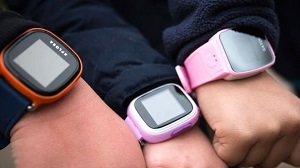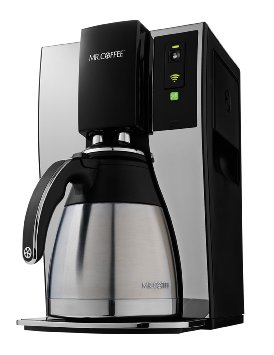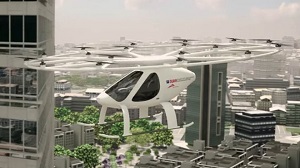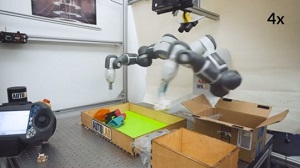Monthly Update
- Details
- Written by: Quintus Potgieter
Warning for parents this Christmas: Net-connected gadgets
The UK’s data regulator has put out a warning detailing the risk that net-connected toys and gadgets could pose on home security.
According to deputy information commissioner Steve Wood, many toys cannot be updated to fix bugs and have such poor security that they could be used by hackers as a way to break into a home network.

Image: BBC
Therefore it is advised that anyone thinking of buying a net-connected gadget should thoroughly research its security and check its privacy settings before wrapping it up to give to someone this Christmas!
The world’s first demountable stadium
The stadiums built in different countries to host the huge event of the Olympic Games often do not have much use afterwards. To remedy this wastage, Qatar has unveiled plans to build the world’s first demountable stadium, made of shipping containers!
These containers will hold things such as removable seats, concession stands and toilets – but the best thing about all this is that the stadium can be dismantled once it is no longer required. It is simply deconstructed and stored for future use, or converted into a smaller utility.
With a seating capacity of 40,000, the stadium is expected to be completed in 2020. Check out the following video to see how the demountable stadium will be put up and how it will come apart again.
The Earth is round…or is it?
A man in California is setting out to prove his idea that the Earth is not actually a sphere, and instead, flat. To prove his claim, he is launching himself at 500 miles per hour in a homemade rocket, several miles above the Earth’s surface. He received help from his supporters to build the rocket, but won’t be able to test it prior to the launch.
Fundraisers have been set up to support the building of the rocket, which has even attracted the attention of American rapper B.O.B; who is now a large supporter of the research into the project.
Watch the below video to learn more about the launch...
World’s first electronically smart pill: Abilify MyCite
The world’s first electronically smart pill, Abilify MyCite, has been approved by the American Food and Drug Association (FDA). The pill has a tiny sensor that is no bigger than a grain of sand, and will allow patient information to be gathered and willingly given to doctors and caretakers.
The data from the pill is transmitted by a patch on the patient’s left rib, which connects to a smartphone via Bluetooth. The smartphone can then display information such as the time the pill was taken, the dosage and the patient’s activity levels.

Image: Proteus Digital Health
It is remarkable how a physcially tiny tablet can be developed into a high-tech piece of medical equipment that can improve the lives of patients and allow for higher accuracy with data collection. However, it is inevtiable with the fast paced world of technology that privacy risks become a concern with devices such as these, and we must work to determine a boundary between technology and ethics.
Works Cited
BBC. 24th November 2017. Warnings over net-connected Christmas gadgets. BBC UK. http://www.bbc.com/news/technology-42114878
Vaqar, Ali. 29 November 2017. World’s First Shipping Container Based Removable Stadium To Be Made In Qatar. Wonderful Engineering. http://wonderfulengineering.com/worlds-first-shipping-container-based-removable-stadium-to-be-made-in-qatar/
Vaqar, Ali. 23 November 2017. This Man Will Launch Himself In A Homemade Rocket To Prove That Earth Is Flat. Wonderful Engineering. http://wonderfulengineering.com/this-man-will-launch-himself-in-a-homemade-rocket-to-prove-that-earth-is-flat/
Vaqar, Ali. 16 November 2017. World’s First Electronic Smart Pill Approved By The FDA. Wonderful Engineering. http://wonderfulengineering.com/worlds-first-electronic-smart-pill-approved-fda/
- Details
- Written by: Evangeline Newby
Cryogenics, the world's most advanced artificial intelligence, an automated clothing folder and a rotating, shape-shifting sky scraper. Read ahead for a snapshot of what interesting things October brought us in engineering news...
Cryogenics: Frozen in time
Ever wondered what it would be like to fast forward and suddenly wake up in the future?
Thanks to developing medical science, this may in fact be possible. An increasing amount of people have been paying for their bodies to be cryogenically frozen after they die, so that they may be able to be brought back to life in the future.
For the body to be cryogenically frozen, it must be cooled with ice packs immediately after death, and then drained of its blood. The body must then be submerged into a sleeping bag inside liquid nitrogen, cooled to -196 degrees Celsius.
Dependant upon the company chosen, preserving your body after you die can cost anywhere upwards of $30,000. It is an amazing thought that we could be preserved and wake up sometime in the future – who knows, 1000 years later! However, science has not yet been able to determine how well the body would stay preserved for extended periods of time, and whether the unfreezing process could guarantee a second chance at life.
Artificial Intelligence in China
The world’s most advanced artificial intelligence surveillance system is being used in Hangzhou, China, to track citizens. The project, called the City Brain project, controls certain parts of urban life using data collected by artificial intelligence. For example, traffic flow can be monitored, and citizens are notified of any congestion ten minutes ahead of time so that they can plan a different route. The aim is to improve the life of citizens in China, which so far has been a success, as traffic congestion is now much lower. Watch the video below to see the other wonders that this project involves:
No time to fold washing? No worries!
$850 may seem like a lot of money, but what if we told you that you will never have to fold washing ever again?
A tech start up based in San Francisco have come up with the ‘FoldiMate’, which is a machine that will fold your washing for you all day. All you need to do is hang the freshly washed clothing on the FoldiMate rack and choose the relevant type of clothing that is being folded. The device can sense the fabric type and therefore will adjust accordingly. With it being able to handle 15-20 pieces of clothing at a time, we think this is the ultimate time saving must-have!
Watch the video below for a 30 second preview of the wonderful FoldiMate!
Dubai’s futuristic rotating, shape-shifting sky scraper!
This futuristic sky scraper is coming to Dubai in 2020. Each floor of the tower can rotate individually, offering a 360 degree view! This is the first building that will continually change shape and as a result, will never look the same for more than a single moment. Check out the below video for a look at some of its breathtaking features.
Works cited
https://futurism.com/images/cryonics/
Takreem, Alina. 28 Oct 2018. China Is Using The World’s Most Advanced Artificial Intelligence Based Surveillance System To Track Its Citizens. Wonderful Engineering. http://wonderfulengineering.com/china-is-using-artificial-intelligence-to-track-its-citizens/
Takreem, Alina. 28 Oct 2018. This $850 Gadget Can Fold Your Laundry All Day. Wonderful Engineering. http://wonderfulengineering.com/this-850-gadget-can-fold-your-laundry-all-day/
Futurism. Oct 2017. https://www.youtube.com/watch?time_continue=1&v=dR0Hm9oot6s
- Details
- Written by: Evangeline Newby
Mr Coffee to the rescue…
They say that money can’t buy happiness – but $999 can buy a Wi-Fi enabled coffee machine, and we think that comes pretty close! This advanced coffee machine, named Mr Coffee, makes coffee for you at your convenience with just a tap of your smartphone using Wi-Fi connectivity. What’s not to love? The only disadvantage we can identify is that Mr Coffee (pictured below) does not come with a walking robot to have the coffee delivered to your sofa as well!

Click here to view Mr Coffee on Amazon.
Man undergoes elective amputation to be fitted with bionic arm
Due to being involved in a motor accident, a man named Milo lost functionality in his arm and therefore decided to voluntarily undergo amputation. His arm has been replaced with astonishingly intelligent wearable technology: a bionic arm, which allows him to have increased functionality. Manufactured by German prosthetics company Otto Bock, the arm is comprised of six sensors that pick up the neuronal signals sent to the forearm from the brain to control arm and hand movement. Electrical signals are converted into mechanical movement for maximised mobility.
To take a look at Milo's incredible journey with this wearable technology, click the video below:
Would you ride in a driverless sky vehicle?
Dubai is racing to become the first to have a sky transport network using Volicopters, pictured below.

The Volicopter is claimed to be able to run at a top speed of 100km/h with a maximum flight time of 30 minutes. Nine independent battery systems ensure safety, and it has been assured that the on-board parachute system will “never be required”. Dubai will begin a 5 year testing period of the Volicopter later this year – but the real question is, would you trust your life with this new technology?
'Human on a chip’: Could this be an alternative to animal testing?

Image: Human on a chip. Credit: fastcompany
For decades now, testing products on animals has been a point of concern and controversy that has caused companies to receive significant public criticism. However, thanks to developing technology, using lab rats or other animals for psychological, biological and physical experiments could become a thing of the past with the invention of the ‘human on a chip’. Lawrence Livermore National Laboratory are working on developing new technology that essentially replicates vital human tissues onto microchips, for testing. Instead of testing on live animals, ‘Human on a chip’ aims at testing on non-conscious human cells, which will then be exposed to chemicals and electrical signals for the experiments (just like any other lab animal).
To read more on this amazing technology, click here.
-Works cited
Dar, Talha. 17 Sept 2017. “10 Best Tech Gadgets For Your Home”. Wonderful Engineering. http://wonderfulengineering.com/10-best-tech-gadgets-for-your-home/
K, Maarej. 4 Sept 2017. Man Undergoes Elective Amputation To Get A Robotic Arm. Wonderful Engineering. http://wonderfulengineering.com/man-undergoes-elective-amputation/
Belton, Padraig. “Would you take a ride in a pilotless sky taxi?” 1 September 2017. BBC. http://www.bbc.com/news/business-41088196
Sohail, Umer. 11 Sept 2017. “‘Human On A Chip’ Is The Latest Technology That Can Replace Animal Testing”. Wonderful Engineering. http://wonderfulengineering.com/human-chip-technology/
- Details
- Written by: Evangeline Newby
Engineering mothers save lives with a simple vehicle tool
Elsa Foley, an engineer at Nissan and mother of two boys, has developed an innovative new technology called Rear Door Alert. The inspiration behind this? Every summer, children die from being left inside a hot car. With the help of Marlene Mendoza, another female engineer, Rear Door Alert has been engineered to set off a unique alarm when something has been left behind in the back seat of the car. Take a look at the video below for an explanation of this new innovative technology.
Apple posts secret job listing
On a hidden website, Apple posted a secret job advertisement in a bid to attract the world’s best engineering talents...

Image courtesy of telegraph.co.uk
However, the initiative backfired when a clever journalist discovered the secret ad. Zac Whittaker, a security reporter with ZDNet, stumbled upon the website whilst analysing data sent from iPhone applications. After Whittaker posted about it on Twitter, the job ad was taken down by Apple.
Futuristic public transport designed by Russian engineering company
Russian engineering company Dahir Insaat has revealed a bizarre plan for what the future of public transport could look like. A gyroscope could be used to avoid traffic entirely, simply by travelling over the top of them. For an animation of how it works, check out the below video.
Although Dahir Insaat’s designs could be deemed as far too futuristic, it is still an interesting idea – and who knows, it could come to life in the future!
Would you live in a floating house in Amsterdam?
With recent advancements in civil engineering, floating homes have become a reality in the bustling city of Amsterdam. Built to protect from the city’s floods, as well as create more space for residential areas, the houses are put together on land and transported to the water via boat.

Image: Amsterdam's "floating village"
Half of the house is underwater, with the structure built from lightweight timber frames. Since the project began in 2011, approximately 20,000 people have moved into these homes. The project will continue on to see a total of 18,000 homes for 45,000 residents, with more of a "village" feel to be created with the future construction of floating schools, restaurants and shops too!
However, although a great solution to floods, unfortunately earthquakes are a major threat to these floating “villages”.
Works cited
The Huffington Post UK. 14 Aug 2017. http://www.huffingtonpost.com.au/2017/08/14/an-engineer-has-reimagined-public-transport-and-it-looks-insane_a_23077583/
Jessica Miley. 20 Aug 2017. http://interestingengineering.com/apple-is-looking-for-talented-engineer-with-secret-job-listing/
Laura Begley Bloom.21 Aug 17.https://www.forbes.com/sites/laurabegleybloom/2017/08/21/this-female-auto-engineer-is-saving-lives-with-one-simple-tool/#4b457968761f
Maarej K. 25 Aug 2017. http://wonderfulengineering.com/floating-houses-are-the-new-thing-in-amsterdam/
- Details
- Written by: Evangeline Newby
The world’s first floating farm off Scotland’s north-east coast
The trial Peterhead wind farm, named Hywind, is estimated to provide power to 20,000 homes, with the turbine output expected to equal or surpass generation from current ones. This breakthrough technology will see wind power being harvested in waters that are too deep for the current conventional bottom-standing turbines.
Below: the wind turbines are currently being put in place. Image credit: BBC.com

Fast facts:
- Each tower weighs 11,500 tonnes
- Turbines can operate in water up to 1km deep
- Each blade measures 75 metres
UK to ban new diesel and petrol vehicles from 2040
In a bid to reduce air pollution, the UK government will put into action a £255 million fund, as well as publishing a court-mandated clean air strategy. This has come after a new order by the courts for the government to act upon the illegal levels of harmful pollutant nitrogen dioxide. To help accommodate such a change, buses and other transport will need to be cleaned, roads may need relayout and road features such as speed humps may need to be added in to smoothen vehicle flow.
Forget planes – fly on a $10 000 drone!
A Swedish man has invented a $10,000 Vertical Take-Off and Landing (VTOL) drone, called the ‘chAIR’, which can lift a person several feet over the ground. The creator, Axel Borg, completed his first successful flight last month. The footage below shows him aboard the drone, navigating through the forest and dodging obstacles without a hitch.
Fukushima: Robot finds what could be melted nuclear fuel
The first images of what could be melted nuclear fuel deposits inside Japan’s Fukushima nuclear plant have been captured by an underwater robot. If the findings are confirmed, it will be a major stepping stone in the clean-up operation (from when the power plant was hit by a tsunami in 2011, forcing over 200,000 people out of their homes). Locating fuel debris in each of the damaged reactors is a crucial part of the decommissioning process, which is expected to take many years.

Image: BBC. Lava-like rocks were found under one of the damaged reactors
The need for speed: Google intends to make the Internet faster
It seems that technology continues to advance at an extraordinary speed, making it difficult for the Internet to keep up. The engineers at Google understand the modern day demand for faster internet, and are therefore looking for alternate solutions. The BBR (Bottleneck Bandwidth and Round-trip propagation time) is a congestion and control algorithm that plays a large role in internet speed. If Google’s engineers can incorporate this algorithm into the system, internet speed could increase and ultimately reduce the minor inconveniences and annoyances of a slow Internet connection.
Works Cited
Harrabin, Roger. “World's first floating wind farm emerges off coast of Scotland.” 23 Jul 2017. BBC.com. http://www.bbc.com/news/business-40699979
Harrabin, Roger. New diesel and petrol vehicles to be banned from 2040 in UK. 26 Jul 2017. BBC.com. http://www.bbc.com/news/uk-40723581
Gohd, Chelsea. “Google Wants to Make the Internet Faster. Here’s How.” 24 July 2017. Futurism.com. https://futurism.com/google-wants-to-make-the-internet-faster-heres-how/
BBC News. “Fukushima disaster: Robot finds possible melted nuclear fuel”. 23 July 2017. BBC.com. http://www.bbc.com/news/world-asia-40696303
Sohail, Umer. “Swedish Man Creates A $10,000 Drone That Can Carry A Man”. WonderfulEngineering.com. 20 Aug 2017. http://wonderfulengineering.com/swedish-flying-carpet-drone-carries-man/.
- Details
- Written by: Evangeline Newby
The all new DexNet 2.0
Roboticists at UC Berkeley have built a robot that, with a 99 per cent success rate, can grab and move unfamiliar, tangible objects. This new technology may be able to solve the problem of robots not being able to pick up awkwardly shaped objects such as shoes and bottles. With this new nimble-fingered robot, named DexNet 2.0, it is envisioned that such technology could revolutionise the manufacturing and supply chain industry.

Image: DexNet2.0. Credit: Adriel Olmos, CITRIS Media
Waste brine to fresh water: a new recovery method
A new way to extract almost 100 per cent of the water from highly concentrated salt solutions has been developed by Engineers at the University of California. The research incorporates carbon nanotube-based heating element that majorly improves fresh water extraction. The new method will aid water shortages in dry regions, as well as helping to reduce concerns surrounding high salinity brine disposal (such as hydraulic fracturing waste).
New translating device speaks 8 languages
A new device, called One2One, could be a replacement for the need of translators!
One2One, powered by IBM’s supercomputer ‘Watson’, takes approximately 3-5 seconds to translate a conversation and play it back. The handy device can pick up eight languages - including English, Japanese, French, Italian, Spanish, Brazilian, Portuguese, German and Chinese. To work properly, the two people having the conversation must be wearing the device. One2One does not need WiFi or phone connectivity to operate, meaning that it can even work in remote areas without draining your phone’s battery.
See below for a video on how it works.
Fast and furious electronics
In the world of fast-paced technology, there is always a push to create smaller and faster electronic units with longer battery life. Scientists from the universities of California and Massachusetts have created a ‘heterostructure’: a 25-atom thick TI (topological insulators) film that adheres to an insulating magnetic film. Devices containing TI are favoured by engineers because it makes the device strong enough to combat errors and defects, so that faulty applications do not end up crashing the entire system.
Works cited
University of California - Berkeley. "Meet the most nimble-fingered robot ever built." 1 June 2017. ScienceDaily. www.sciencedaily.com/releases/2017/06/170601192717.htm
University of California - Riverside. "Squeezing every drop of fresh water from waste brine: Research expands efforts to provide clean water for the world's growing population." May 29 2017. ScienceDaily. www.sciencedaily.com/releases/2017/05/170529133659.htm
University of California - Riverside. "Accelerating the quest for quicker, longer-lasting electronics: Research makes topological insulators magnetic well above room temperatures." 23 Jnue 2017. ScienceDaily. www.sciencedaily.com/releases/2017/06/170623155508.htm
Umer sohail. New Earpiece Translates Foreign Languages As You Have A Conversation”. 26 June 2017. Wonderful Engineering. http://wonderfulengineering.com/new-earpiece-translates-foreign-languages-as-you-have-a-conversation/
- Details
- Written by: Evangeline Newby
This month's May Roundup has some interesting finds...be sure to scroll down for a read.
A printable, flexible and rechargeable battery
Nano-engineers at the University of California (San Diego), have developed zinc batteries flexible and stretchable by using hyper-elastic polymer layers made from isoprene and polystyrene. In this way, the batteries can stretch twice their size without damage. The batteries were also able to be made rechargeable by adding bismuth oxide to the ink, along with zinc silver oxide.
To find out more, see the video below.
Invisibility could be possible...
 New technology could be achieving what was once thought to be impossible: invisibility. Researchers from North Carolina State University have tuned the refractive index of a semiconductor using electric fields, resulting in a change of light behaviour passing through it.
New technology could be achieving what was once thought to be impossible: invisibility. Researchers from North Carolina State University have tuned the refractive index of a semiconductor using electric fields, resulting in a change of light behaviour passing through it.
This breakthrough opens up a world of possibilities, including being able to watch a virtual reality without goggles, the creation of an invisibility cloak and watching a movie that floats in front of your eyes.
Click here to read more.
Image credit: imeche.org
Soggy pizza crusts a thing of the past: Apple engineers a special box
While Apple has surprised us in the past with its technological advancements, we never would’ve guessed the company would expand its repertoire to solve our food-related problems.
The pizza box, pictured below, means that we no longer have to endure the pain of soggy take-out.

Image source: Wonderfulengineering.com
Patented by Apple in 2010, this circular pizza box contains steam holes in the right places to allow steam to escape, along with carefully placed ridges to elevate certain parts of the pizza. The box is also designed to be storage savvy.
However, bad news: these boxes, currently being trialled by Apple employees, have not been publicly released…
Is your home hack-proof?
The devices in your home – such as light switches, doorbells and fridges – can be controlled remotely and connected through Wi-Fi. This sets up a network in which data is collected and shared, making it a possible target for hackers. How protected are your home devices?
Click here for a BBC video, where cyber-security expert Ken Munro discusses ways in which you can protect your home from hack attacks.
Works Cited
Katwala, Amit.25 May 2017. “Scientists create world’s first printable, flexible and rechargeable battery”. Imeche.org. http://www.imeche.org/news/news-article/scientists-create-world's-first-printable-flexible-and-rechargeable-battery
Arif, Aayesha. “Apple Patented a Pizza Box That Will Keep The Crusts Crispy”. 19 May 2017. Wonderfulengineering.com. http://wonderfulengineering.com/apple-patented-pizza-box-will-keep-crusts-crispy/
- Details
- Written by: Evangeline Newby
Welcome back to another month of quirky and exciting occurrences in the Engineering world. From the invention of dissolvable batteries, to cooking dinner in your washing machine, this month's April roundup has got you covered for an interesting read...
Engineering the perfect Easter egg
Have you ever wondered why chocolate melts in your mouth but not your hand? The explanation to this is with precision melting, according to chemical engineer Professor Ray Dagastine (University of Melbourne).
“Cocoa butter is a critical ingredient, it’s what gives chocolate its nice creamy taste,” he says.
“It is also the key to why chocolate melts in your mouth and not in your hands, as cocoa butter is a complex, mostly saturated fat that is a solid at room temperature, but melts at just below the temperature inside the human body.”

Image courtesy of Maxpixel
Your phone’s fingerprint sensor is not fool-proof!
Recent fingerprint technology on smartphones has taken convenience to the next level, with just one touch being able to unlock the device. With the same touch of a finger, you can buy a bag of groceries, a new fridge, or even a new car. However, the fingerprint revolution bears major security holes.
New York University and Michigan State University researchers propose that smartphones can easily be tricked by fake fingerprints that are digitally composed of many common features found in human fingerprints.

Image: Sample fingerprints that the researchers at NYU and Michigan State University compared against the MasterPrints. Solid black lines around a print indicate a match (New York Times).
From computer simulations, scientists developed artificial "MasterPrints" that resemble a close match to prints similar to 65 per cent of phone users.
So, it seems that our fingerprints are not so fool-proof after all.
Dissolvable batteries made out of silk
Biodegradable batteries have been developed to produce enough voltage to power temporary medical implants. These flexible batteries are made of gauzy silk films, and harmlessly dissolve away into the body after a specified number of days.
The image below shows a thin battery made of metal-coated silk electrodes (top left). The bottom right shows a silk-ionic liquid electrolyte completely dissolved in saline buffer solution after 45 days.

Air-powered wheelchair to help every kid enjoy a day at the waterpark
Engineers at the University of Pittsburgh created a powered wheelchair that runs on compressed air. This allows those with limited mobility to safely participate in a day at the water park. Check out the below video to see how it works.
Smart 5G Bandaids able to communicate with doctors
Researchers at the Institute of Life Science (ILS), Swansea University, have developed smart bandages that can detect how a patient’s wound is healing and communicate with the doctor this information over a 5G network. The bandaid can communicate any treatment needed and monitor patient activity levels.

Image courtesy of wonderfulengineering.com
Forget buying an oven – cook dinner in your washing machine...
It's time to forget the kitchen and instead head on down to the laundry for a good feed. Israeli design student Iftach Gazit has designed a new concept that combines cooking and laundry together in the same household machine. The energy-conserving concept allows for your food to be spinning in the washing machine, whilst doing laundry and cooking at the same time. Gazit created steam-bag meals that you can drop in your laundry – whether it is pre-packaged foods, steak, or fresh salmon. These waterproof bags are also an idea for the homeless to be able to utilise free cooking services at the Laundromat.

Image courtesy of wonderfulengineering.com
Works cited
Thomas, Jennifer. “Engineering the Perfect Easter Egg”. 13 April 2017. University of Melbourne. https://pursuit.unimelb.edu.au/articles/engineering-the-perfect-easter-egg
Goel, Vindu.” Your phone’s fingerprint sensor can be fooled”. April 12, 2017. Financial Review. http://www.afr.com/technology/mobiles-and-tablets/your-phones-fingerprint-sensor-can-be-fooled-20170412-gvj8nb#ixzz4e71dGGNj
Patel, Prachi. “Dissolvable batteries made of silk”. April 12, 2017. Chemical and Engineering News. http://cen.acs.org/articles/95/web/2017/04/Dissolvable-batteries-made-silk.html
Liszewski, Andrew. “Every Kid Can Enjoy A Day At The Waterpark With This Air-Powered Wheelchair”. Gizmodo, AU. Apr 13, 2017. https://www.gizmodo.com.au/2017/04/every-kid-can-enjoy-a-day-at-the-waterpark-with-this-air-powered-wheelchair/
Arif, Aayesha. “This Smart Bandage Will Communicate Your Wound Condition To The Doctor Using 5G”. 19 April 2017. Wonderful Engineering. http://wonderfulengineering.com/this-smart-bandage-will-communicate-your-wound-condition-to-the-doctor-using-5g/
Arif, Aayesha. “You Can Now Cook With Your Dinner In A Washing Machine With This New Invention”. 18 April 2017. Wonderful Engineering. http://wonderfulengineering.com/can-now-cook-dinner-washing-machine-new-invention/
- Details
- Written by: Evangeline Newby
What has the Engineering world taught us in the past month? From brilliant developments to quirky new inventions, the good news and the not so good, the month of March has proven to be an interesting one...
Development announced of a new BLAST PROOF tower in Melbourne’s CBD

Image courtesy of Sourceable.net
Can any building really be engineered to be “blast-proof”? A new “blast-proof” and “ram raid-proof” 39-storey tower in Melbourne’s CBD will be built to house 2500 police.
Read more on this here.
3000-piece hand cranked wooden instrument is played by 2000 marbles
An incredibly complex music box that took a whopping 14 months to build has been created by Martin Molin from the band Wintergaten. It replicates the sound of a full band; containing around 3000 parts, 3000 screws, 500 Lego parts, five sheets of Baltic birch plywood and 2000 marbles.
You can read more on this intriguing new invention here.
Check out this short video to see how it runs:
The wearable robotic that will change the way we operate - literally.
A team of researchers at the University of the West of England (UWE Bristol) are developing a wearable robotic system to be used on keyhole surgeries. The wearable ‘”exoskeleton” will allow surgeons natural and agile movement as well as the ability to ‘sense’, ‘see’, control and safely navigate. Read more on this rebotic revolution here.
Watch the UWE Bristol professors give a valuable insight into this incredible new technology:
New foam developed that soaks up an oil spill
Introducing the Oleo Sponge: a reusable foam that can pull dispersed oil from water (the entire water column, not just the surface!). This exciting new innovation has been developed by scientists at the US Department of Energy’s (DOE) Argonne National Laboratory: an invention that could potentially lead to far more effiicient oil spill clean ups in the future.
Check out the video below for an interesting preview on how it works.
Click here to read more about the Oleo Sponge.
Teaching drones to land on moving targets via fuzzy logic
Landing drones on moving targets is scientifically quite difficult to achieve, according to Manish Kumar (associate professor of mechanical engineering, University of Cincinnati’s College of Engineering and Applied Science.). To address this problem, fuzzy logic can be adopted as it allows for more nuance, or degrees of truth.

Image courtesy of Eureka Magazine
For a deeper look into how this works, click here.
Ford first car manufacturer to use Stratasys’ Infinite Build 3D printer

Image courtesy of Eureka Magazine
At Stratasys’ Research and Innovation Centre in Dearborn, Ford has been exploring how large one-piece car parts can be 3D printed for prototyping and future production vehicles. Stratasys states that its new printer could revolutionise the way we manufacture vehicles in the future.
Trump immigration policy threatens India’s $75 billion revenue
It seems the Mexican border wall isn't the only barrier that President Donald Trump would like to build. Trump’s proposed immigration reform could build a so-called “wall” against Indian IT being able to enter the market on skilled H-1B visas (non-immigrant visas). As an unfortunate consequence, India may face a large period of unemployment.
To read more on this topic, click here
45 Aussies travel to Nepal to spread the word on Sustainable Engineering
Engineering students from throughout Australia embarked on a cultural two week program to teach Nepalese villages sustainable tactics to better their futures. Students looked at projects such as innovative ways of collecting rainfall and waste for water for irrigation.
Read more here.
Works Cited
Smith, Stephen. “Blast ‘Proof’ or Blast ‘Resistant’ Engineering”. Sourceable. 7 Mar. 2017.
Austin-Morgan, Tom. “3000-piece hand cranked wooden instrument is played by 2000 marbles”. Eureka! 16 Mar. 2017.
Austin-Morgan, Tom. “Wearable robotic tools being developed for surgery.” Eureka Magazine. 17 Mar. 2017.
Austin-Morgan, Tom. “Soaking up an oil spill.” Eureka Magazine. 13 Mar. 2017.
Austin-Morgan, Tom. “Using fuzzy logic to teach drones to land on moving targets”. Eureka Magazine. 28 Feb. 2017.
Austin-Morgan, Tom. “Ford and Stratasys test large scale one-piece 3D printing.” Eureka Magazine. 7 Mar. 2017.
Rao, Rajiv. New Tech for Old India. “Indian IT’s gargantuan re-engineering problem.” ZDNet.com. 17 Mar. 2017.
Pidgeon, Emily. “Poor given a leg up by Gladstone’s engineering future.” Ballina Shire Advocate. 6 Mar. 2017.

